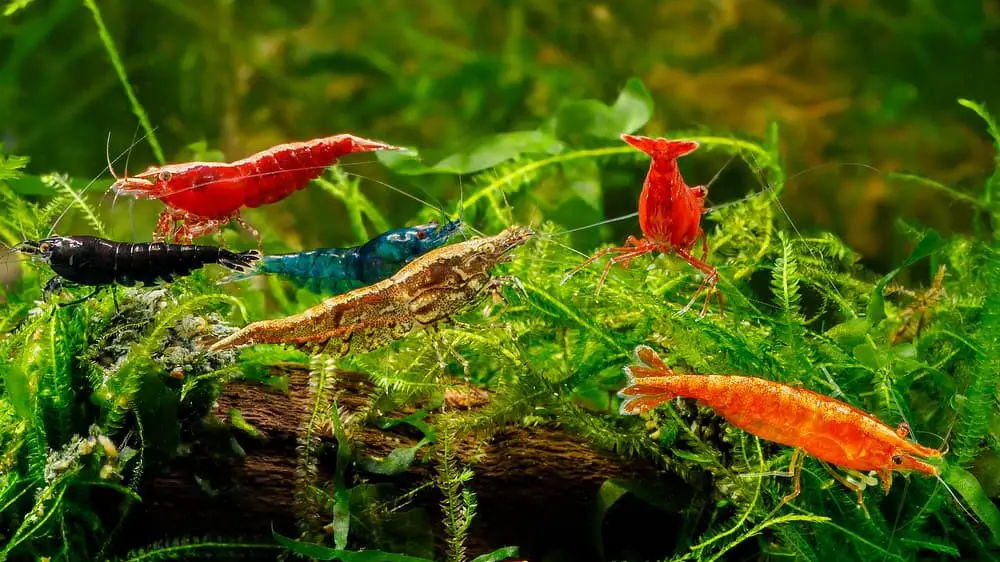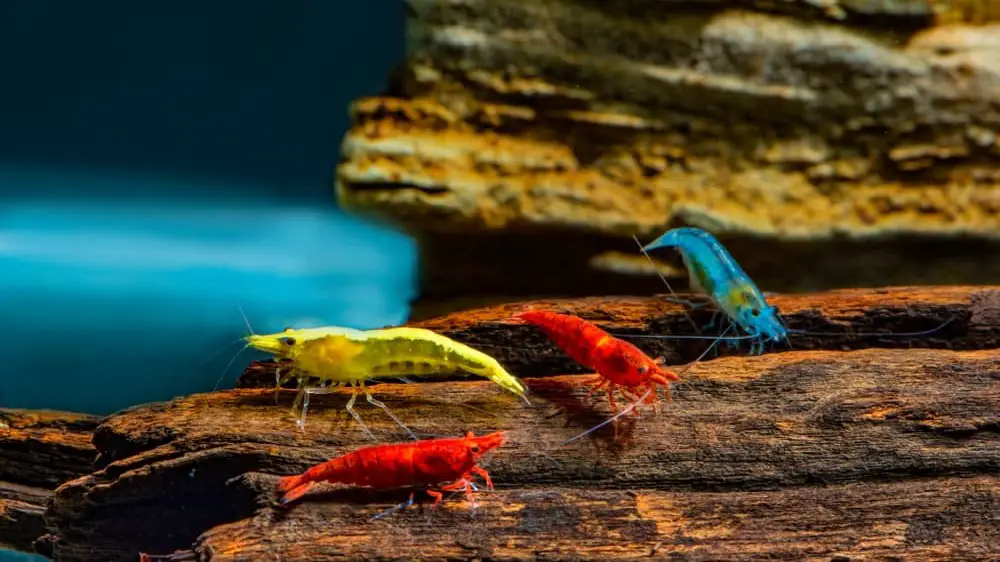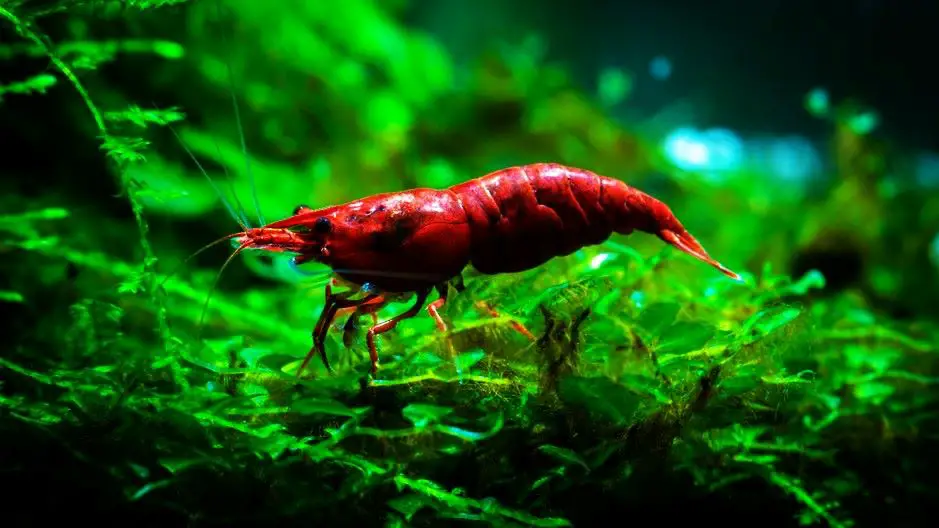Shrimpfam,I remember when I first started my shrimp-keeping journey, I was overwhelmed by the variety of species and their specific needs. Neocaridina shrimp, in particular, caught my eye with their stunning hues and hardy nature. But, like many of you, I had my fair share of challenges.
From understanding their ideal water parameters to providing the right diet, it was a learning curve that spanned over several months.
So, what are Neocaridina shrimp? Neocaridina shrimp are a genus of freshwater shrimp known for their vibrant colors and ease of care. They are very easy to keep, making them a popular choice among both beginners and seasoned shrimp keepers. With over 40 different color variations.
In this post, we’ll dive deep into the world of Neocaridina shrimp, sharing personal experiences, overcoming common challenges, and providing you with the knowledge you need to keep these colorful critters happy and healthy.
So, buckle up, shrimplets, we’re about to embark on an exciting journey into the world of Neocaridina shrimp.

What are the different types of Neocaridina shrimp?
When we delve into the world of Neocaridina shrimp, we find ourselves immersed in a vibrant palette of colors and patterns. Each type of Neocaridina shrimp is a unique spectacle of nature, a testament to the beauty of biodiversity. In fact, there are over 40 different variations of Neocaridina shrimp, each with its own distinct charm and characteristics.
The most common and perhaps the most recognized type is the Red Cherry Shrimp, a bright red variety that adds a pop of color to any aquarium. But the beauty of Neocaridina shrimp doesn’t stop there. We have the Yellow Shrimp, a sunny delight that seems to carry a piece of sunshine wherever it roams.
Then there’s the Blue Velvet Shrimp, a stunning variety that sports a deep blue hue, reminiscent of a clear summer sky. The Snowball Shrimp, on the other hand, is a pristine white variety that stands out against the greenery of a planted tank.
The Black Rose Shrimp is another popular variety, with its dark, almost black coloration providing a striking contrast to the typically bright aquarium environment. The Green Jade Shrimp is a variety that carries a beautiful green color, a sight to behold in any shrimp tank.
Each of these Neocaridina shrimp varieties has its own charm and appeal. They all share the same hardy nature and ease of care that Neocaridina shrimp are known for, making them a joy to keep in a home aquarium.
Whether you’re a beginner or a seasoned shrimp keeper, there’s a Neocaridina shrimp variety that’s sure to captivate your interest and enrich your shrimp-keeping experience.

How to care for Neocaridina shrimp?
Caring for Neocaridina shrimp is a rewarding experience that combines the joy of observing these fascinating creatures with the satisfaction of maintaining a healthy and vibrant aquarium ecosystem.
The first step in caring for Neocaridina shrimp is providing them with a suitable environment. This means setting up an aquarium with the right water parameters. Neocaridina shrimp thrive in a wide range of water conditions, but they prefer slightly hard water with a pH between 6.5 and 8.0.
Temperature is another crucial factor. A range between 70 and 78 degrees Fahrenheit (21-26 degrees Celsius) is ideal for these shrimp. It’s also important to ensure the tank has a good filtration system to keep the water clean and oxygenated, as well as a heater to maintain a stable temperature.
Water hardness, measured in degrees of general hardness (dGH) and carbonate hardness (dKH), is another important factor. Neocaridina shrimp prefer moderately hard water, with a general hardness between 6 and 8 dGH and carbonate hardness between 3 and 10 dKH.
The total dissolved solids (TDS) in the water, which include minerals and other substances, should ideally be between 150 and 200 ppm (parts per million) for Neocaridina shrimp. This range ensures the shrimp receive the necessary minerals for their growth and shell development.
It’s essential to maintain a zero level of ammonia, nitrite, and keep nitrate levels below 20 ppm. These substances can be harmful, even lethal, to shrimp at high levels. Regular water changes and a good filtration system can help maintain these parameters at safe levels.
When it comes to feeding, Neocaridina shrimp are not picky eaters. They are omnivorous and will happily feed on a variety of foods. A diet consisting of high-quality shrimp pellets, blanched vegetables, and occasional protein sources like bloodworms will keep them healthy and vibrant.
I wrote a peace on how to feed Neocaridina properly here if youre interested, its called The Two Hour Rule.
Regular water changes are also a key part of Neocaridina shrimp care. Replacing about 20-30% of the tank water every two weeks helps maintain optimal water quality and prevent the buildup of harmful substances.
Remember to use a dechlorinator.
It’s also essential to provide plenty of hiding spots in the form of plants, rocks, and driftwood. These provide the shrimp with a sense of security and also serve as grazing grounds where they can find biofilm, a natural food source that is beneficial for their health.
Remember that Neocaridina shrimp are peaceful creatures that do well in a community tank with other non-aggressive species. Avoid housing them with large or aggressive fish that might see them as a snack.
By following these guidelines, you can ensure your Neocaridina shrimp thrive and bring you endless hours of enjoyment as you watch them explore, feed, and interact in their aquatic world.

In Closing: Embracing the World of Neocaridina Shrimp
Diving into the world of Neocaridina shrimp is a journey filled with vibrant colors, fascinating behaviors, and rewarding experiences. These hardy, adaptable creatures offer endless enjoyment and a unique opportunity to create a thriving, miniature ecosystem right in your living room.
From understanding the different types of Neocaridina shrimp to learning about their care requirements and ideal water parameters, we’ve covered a lot of ground. But remember, shrimp keeping is a continuous learning process. Each day brings new observations, challenges, and triumphs.
If you ever find yourself in need of advice or simply want to share your shrimp-keeping experiences, don’t hesitate to reach out. We’re all part of the same shrimp nation, after all. If you can’t reach me here, check out the Aquarium Shrimp Keeping community on Facebook. It’s a great place to connect with fellow shrimp enthusiasts and learn from their experiences.
On a final note, remember that the joy of shrimp keeping lies not just in the destination, but also in the journey. So, take your time, enjoy the process, and most importantly, keep those shrimplets happy.
Happy Shrimp Keeping, shrimpfam!

FAQ on Neocaridina Shrimp
Q. Where do Neocaridina shrimp originate from?
A. Wild Neocaridina shrimp mostly originate from South-East Asia, living in streams and ponds, usually with plenty of plants and often with wood and rocks as natural substrate. Many species in the hobby, however, have been captive bred.
Q. What sort of water conditions do Neocaridina shrimp need?
A. Neocaridina shrimp need high water quality. They do best in medium to hard water, with a pH of 6.5-8.0. The temperature should be between 21-26°C/70-79°F. They are intolerant of ammonia and nitrite, and too much copper is also fatal.
Q. How do Neocaridina shrimp breed?
A. Neocaridina shrimp usually spawn shortly after moulting, with the female releasing pheromones into the water to indicate her readiness. The male deposits his sperm on her genital opening, and as the eggs pass through this opening they are fertilised and then placed along the female’s abdomen where she carries them until they hatch.
Q. How do you raise Neocaridina shrimp offspring?
A. Neocaridina shrimp offspring must be kept in a mature aquarium. They primarily feed on minute organisms in the tank. As they grow, they will eat particles that break free of shrimp foods and will also graze on any algae.
Q. Why do Neocaridina shrimp sometimes die for no apparent reason?
A. There could be several reasons for unexplained deaths among Neocaridina shrimp. These include old age, copper poisoning, failed moulting, high CO2 levels, reduction in water quality, predation, or disease.

